Documents
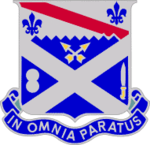
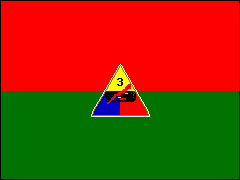

“Vanguards”
Documents
M2 and M3 Bradley Fighting Vehicle Systems (BFVS of the 5th Cavalry Regiment)
The M2/M3 BFVS family consists of the M2/M2A1/M2A2/M2A3 Infantry Fighting Vehicle, the M3/M3A1/M3A2/M3A3 Cavalry Fighting Vehicle and derivatives of these vehicles including: manpads under armor – the integration of the STINGER Missile System into the M2A2/M3A3 vehicles; Bradley fire support team vehicles and the command group vehicle variants.
The mission of the Bradley Fighting Vehicle [BFV] is to provide mobile protected transport of an infantry squad to critical points on the battlefield and to perform cavalry scout missions. The BFVS will also provide over watching fires to support dismounted infantry and to suppress or defeat enemy tanks and other fighting vehicles. The Bradley Fighting Vehicle is a fully armored, fully tracked vehicle designed to carry Mechanized Infantry into close contact with the enemy. It possesses sufficient cross-country mobility to keep up with the Abrams Main Battle Tank, medium and long-range firepower capable of defeating any vehicle on the battlefield, and is adequately armored to protect the crew from artillery and small arms threats. During World War II, the vehicle’s namesake, General Omar Bradley, was known as the “GI General”.
The Bradley is able to close with and destroy enemy forces in support of mounted and dismounted Infantry and Cavalry combat operations. The Bradley Fighting Vehicle family currently consists of two vehicles: the M2 Infantry Fighting Vehicle and the M3 Cavalry Fighting Vehicle. Just as with its predecessor, the M113 family, the Bradley will eventually be the platform for a wide range of support vehicles.
The M1 Abrams tank and the M2 Bradley Infantry Fighting Vehicle have the armored protection to provide a relatively high degree of battlefield survivability. Initially the Bradley was protected against 14.5mm projectiles on all sides. The M2A2 provided protection against 30mm projectiles on all sides, and added spall liners. The M2A3 added titanium roof armor. The BFV, while having better armor protection than the M113, lacks adequate armor protection to withstand medium to heavy ATGM fire. Man-portable anti-tank and anti-vehicular weapons such as the Rocket Propelled Grenade ( RPG-7) are capable of penetrating 12 inches of steel. A bolt-on armor kit for the M113, providing 14.5 mm ballistic protection, was developed and tested. Except for the mounting provisions the external armor appliqué was not incorporated for production for the M113.
Unlike the M113 family of vehicles the Bradley replaces, this is not simply a “battle taxi”. The Bradley is a sophisticated weapons platform capable of providing tremendous firepower in direct support of the Infantry it carries. The role of the Bradley is to Safely transport Infantry to critical locations on the battlefield; Provide fire support to cover their dismounted operations, and Destroy enemy tanks and other vehicles that may threaten the Infantry it carries
The Bradley’s main armament is the M242 25mm “Bushmaster” Chain Gun, manufactured by McDonnell Douglas. The M242 has a single barrel with an integrated dual-feed mechanism and remote ammunition selection. Either armor piercing (AP) or high explosive (HE) ammunition may be selected with the flick of a switch. The Gunner may select from single or multiple shot modes. The standard rate of fire is 200 rounds per minute, and has a range of 2,000 meters (depending on the ammunition used). A wide range of ammunition has been developed for this weapon, making it capable of defeating the majority of armored vehicles it is likely to encounter, up to and including some main battle tanks. The M240C machine gun, mounted to right of the Bushmaster, fires 7.62mm rounds.
When facing heavier enemy armor the Bradley relies on the TOW Anti-Tank Missile, manufactured by the Hughes Aircraft. Launched from a smooth tube launcher, the missile’s wings and tail fins are folded inside its body until launch. Two of these missiles are carried ready to fire in a collapsible, armored launch rack on the left of the turret. The Bradley must stop in order to fire these missiles, which are them reloaded by the Infantrymen in the back of the vehicle, using a special hatch which provides armor protection during the reload operation. The missile is equipped with a massive shaped charge, high explosive warhead and is propelled by a two-stage solid propellant motor. The range of the TOW missile is nearly 4 kilometers and the missile will reach a speed of almost Mach 1 on its way to the target. This weapon is capable of destroying any armored vehicle in existence today and is deadly accurate.
The wide tracks and 600 horsepower turbo-diesel power plant give the vehicle the mobility it needs to keep up with the Abrams, and keep the soldiers it carries out of harms way. In order to fulfill the requirement for rapid worldwide deploy ability, the Bradley can be transported by truck, rail, ship and transporter aircraft. In addition, all Bradleys are amphibious. Early models were equipped with a water barrier, which is erected by the crew before entering the water – a procedure that takes about 30 minutes. Later models have an inflatable pontoon, which fits on the front and sides of the vehicle. This pontoon is inflated in about 15 minutes, and is continuously pressurized during operation. The pontoon is compartmentalized to provide protection against sinking in the event of rupture of the pontoon. Water propulsion is provided by tracks which propel the vehicle at about 4 MPH.
The vehicle’s reliability, survivability and lethality has surpassed initial expectations. Of the 2,200 Bradleys involved in Operation Desert Storm, only three were disabled. In fact, more enemy armored vehicles were destroyed by Bradleys than by the Abrams Main Battle Tanks!
The M2 Infantry Fighting Vehicle [IFV] is a fully tracked, lightly armored vehicle that offers significant improvements over the M113 series of armored personnel carriers. The M2 possesses greater power, greater acceleration, and an advanced suspension for a significant increase in cross-country speed. Like the M113, the primary purpose of the M2 is to carry infantryman on the battlefield, and transport and support them with fire if necessary. The M2 Bradley carries a crew of three (Commander, Gunner & Driver) and a six-man Infantry section into combat.
The M3 Cavalry Fighting Vehicle [CFV] is exactly the same chassis as the M2 IFV with some minor internal differences. The M3 is a cavalry/scout vehicle, instead of carrying 6 dismounts in the payload compartment, the M3 carries a pair of scouts, additional radios, ammunition, and TOW and Dragon or Javelin missile rounds. In fact, the only noticeable differences between the M2 and the M3 are that the external firing ports for the squad M16s are absent on the M3.
In the early 1980s the U.S. began a new form of vulnerability experimentation called Live-Fire Testing (LFT). In LFT, a complete vehicle, such as a tank or armored personnel carrier, is placed in full battle readiness, engine running, full load of fuel and ammunition, and fired at with an overmatching threat. Only the absence of a live crew compromises actual encounter realism. Congressional legislation had been passed recognizing that in spite of design limits defining absolute protection, systems should nevertheless be tested according to threats expected to be encountered. Many such threats could be overmatching. The issue was to mitigate and ameliorate such events. In addition, LFT can uncover vulnerabilities not foreseen by vehicle designers and improve survivability.
The first LFTs occurred against the M113 armored personnel carrier. Bradley live-fire actually began before the M113 tests, but the M113 firings were completed first. For the most part, these results were non controversial. By 1985, testing had begun on the more modern Bradley fighting vehicle. To accompany field testing, the program test plans required that vulnerability models be used both to predict and, subsequently, to be upgraded by actual LFT results. As the test proceeded and the results were compared to model predictions, an apparent pattern of disagreement began to emerge. Critics in the Office of the Secretary of Defense (OSD) questioned the fidelity of existing ballistic vulnerability modeling.
By the end of 1994 the Army had produced a total of 6,724 Bradleys, 4,641 in the M2 Infantry configuration and 2,083 in the M3 Cavalry configuration. Three versions of the M2/M3 have been procured: 2,300 “basic,” or A0 Bradleys; 1,371 A1 Bradleys which incorporates the TOW 2 missile subsystem; and 3,053 A2 “high survivability” vehicles. Following Desert Storm the Army conducted depot conversion of A0 and A1 Bradleys to the A2 configuration, modifying 1,423 A2s to the A2 ODS configuration, and preparing to upgrade 1,602 A2s to the A3 configuration. M2/3A0s and A1s continued to be upgraded to the A2 configuration in FY96. Selected M2/3A2s were modified with the ODS upgrade package through FY02. The First Unit Equipped (FUE) for the A2 ODS variant was FY96.
A mechanized infantry battalion is composed of a Headquarters & Headquarters Company and three line maneuver Companies (A, B, & C), utilizing forty-four Bradley Fighting Vehicles and a number of Humvees and other vehicles. A line maneuver company consists of five officers and one-hundred-thirty enlisted men, with three platoons utilizing fourteen Bradleys. Each platoon has four Bradley crews and three nine-man infantry squads (two rifle squads and one heavy weapons squad). HHC contains the command group and staff, the scout platoon, mortar platoon (120 mm), medical platoon, sniper section, and other support personnel. The 1st Battalion, 18th Infantry, is authorized 36 officers, 1 warrant officer and 666 enlisted, for a total of 703 soldiers.
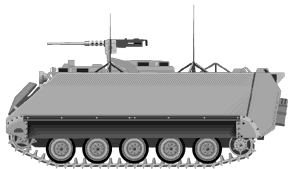
M113-A3
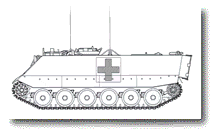
MEDAVAC
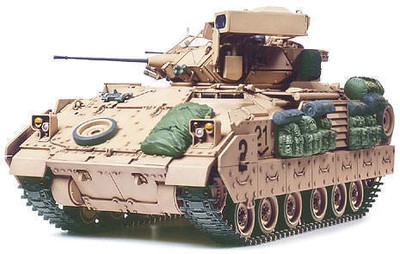
BRADLEY CFV
50 cal Copula M113-A3
